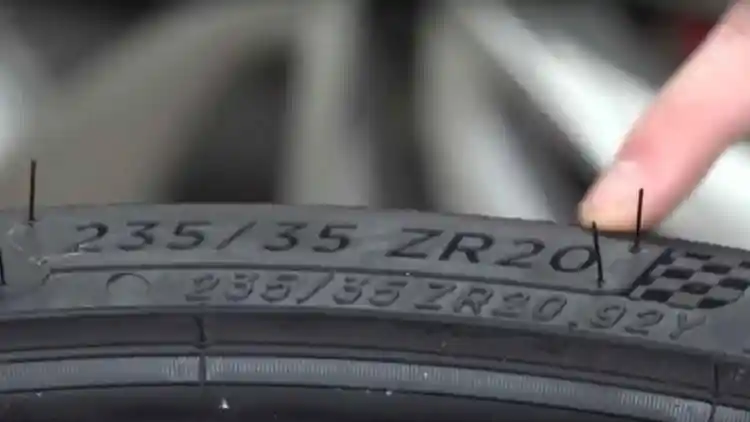- What Does "Exceed UAE" Mean for Drivers?
- Key Driving Tips to Avoid Fines and Stay Safe
- What to Do If You Are Issued a Fine
- Best Practices for Safe Driving in Challenging Conditions
- FAQ
Driving in the UAE offers a unique experience, and Exceed UAE shows you how to stay safe while respecting limits. From Dubai streets to desert highways, this guide ensures responsible driving, car care, and avoiding fines.
What Does "Exceed UAE" Mean for Drivers?
The phrase "Exceed UAE" can be interpreted in a driving context as surpassing legal or advisable limits while on the road. This could mean driving over the speed limits, ignoring traffic rules, or neglecting essential vehicle maintenance. UAE has some of the most well-maintained roads globally, but their strict driving regulations are there for everyone’s benefit. Following these rules not only helps you avoid fines but also ensures safer driving for all road users.
Why It’s Important to Stay Aware of Driving Rules
High Penalties: The UAE has steep fines for speeding and other violations, starting from AED 300 (SAR 306) and increasing based on the severity of the offense. Repeated offenders may face license suspensions or impoundment of vehicles.
Risk of Accidents: Speeding or ignoring traffic rules increases the likelihood of accidents on highways and in urban areas.
Legal Consequences: Violating rules doesn’t just impact your bank balance but can lead to legal proceedings, which are often avoidable with a little caution.
Key Driving Tips to Avoid Fines and Stay Safe
Road rules vary worldwide, but some driving principles are universal. Let's focus on smart tips to help you adhere to regulations, not just in the UAE, but everywhere.
1. Always Know the Speed Limits
Roads in UAE typically have clearly posted speed limit signs. Highways commonly range between 100-140 km/h, while city streets often have lower limits (40-80 km/h). To avoid issues:
Check limit signs frequently, especially when driving through different areas.
Most vehicles in the UAE come equipped with built-in warning systems. Enable this feature for speed reminders.
On highways, stick to speeds below the upper limit to provide a safety buffer.
2. Maintain Your Vehicle Regularly
Consistent upkeep reduces the risk of mechanical failures that might lead to exceeding speed limits unintentionally. Essential maintenance includes:
Inspecting tires monthly, particularly in warm climates, to ensure good grip. Properly inflated tires prevent loss of control.
Brakes should be serviced frequently to allow effective stopping, especially in emergency situations.
Cooling systems are critical when driving in extreme heat, such as desert environments. Ensure the radiator and engine coolant are in top condition.
3. Plan Your Routes Ahead
Use navigation apps to understand road layouts and expected speeds in new areas. Apps like Google Maps or Waze provide live updates on speed limits.
Avoid traffic congestions, which often tempt drivers to speed once they find open roads.
What to Do If You Are Issued a Fine
Nobody plans to break the rules, but mistakes can happen. If you receive a fine, it’s important to act promptly to resolve the situation. Here’s how:
Admit Responsibility: Don’t argue or escalate the scenario with authorities. A polite manner often helps in handling misunderstandings.
Pay or Appeal: Once issued, most fines can be paid through online portals. For major disputes, a structured appeal process exists.
Learn and Improve: Treat the penalty as a learning opportunity. Begin setting alerts on your car’s dashboard or personal devices to keep track of driving habits.
Best Practices for Safe Driving in Challenging Conditions
Governments worldwide have strict rules for good reason. However, geographical and weather conditions can add an extra challenge to driving. Here are some extra tips:
Handling Extreme Heat or Sandstorms
Slow down significantly when visibility is low during storms.
Always wear seatbelts and encourage passengers to do the same.
Test your car’s air conditioning for comfort during long journeys in hot weather.
Adapting to Different International Roads
When traveling abroad, make an effort to familiarize yourself with the specific traffic rules of any country. Some rules may differ greatly, but technology like navigation apps can bridge the knowledge gap.
Practice Defensive Driving
This style of driving means anticipating potential hazards and adjusting your actions accordingly.
Maintain a safe distance between your vehicle and the one ahead.
Avoid sudden swerves or abrupt stops unless necessary.
Observe all mirrors before changing lanes or entering congested areas.
FAQ
Q: How much are fines for exceeding speed in UAE?
A: Fines can start from AED 300 (SAR 306) and may increase based on severity. Some serious breaches can exceed AED 3,000 (SAR 3,061). Always drive safely to avoid penalties.
Q: How to deal with driving in sandstorm conditions?
A: Slow down, ensure your car lights are on, and pull over if visibility becomes too poor. Safety during low-visibility events is the priority.
Q: What is the speed tolerance in UAE?
A: Most areas allow a 20 km/h speed buffer beyond posted limits, but this may not apply everywhere. Check updated local policies before relying on this assumption.
Read More:













